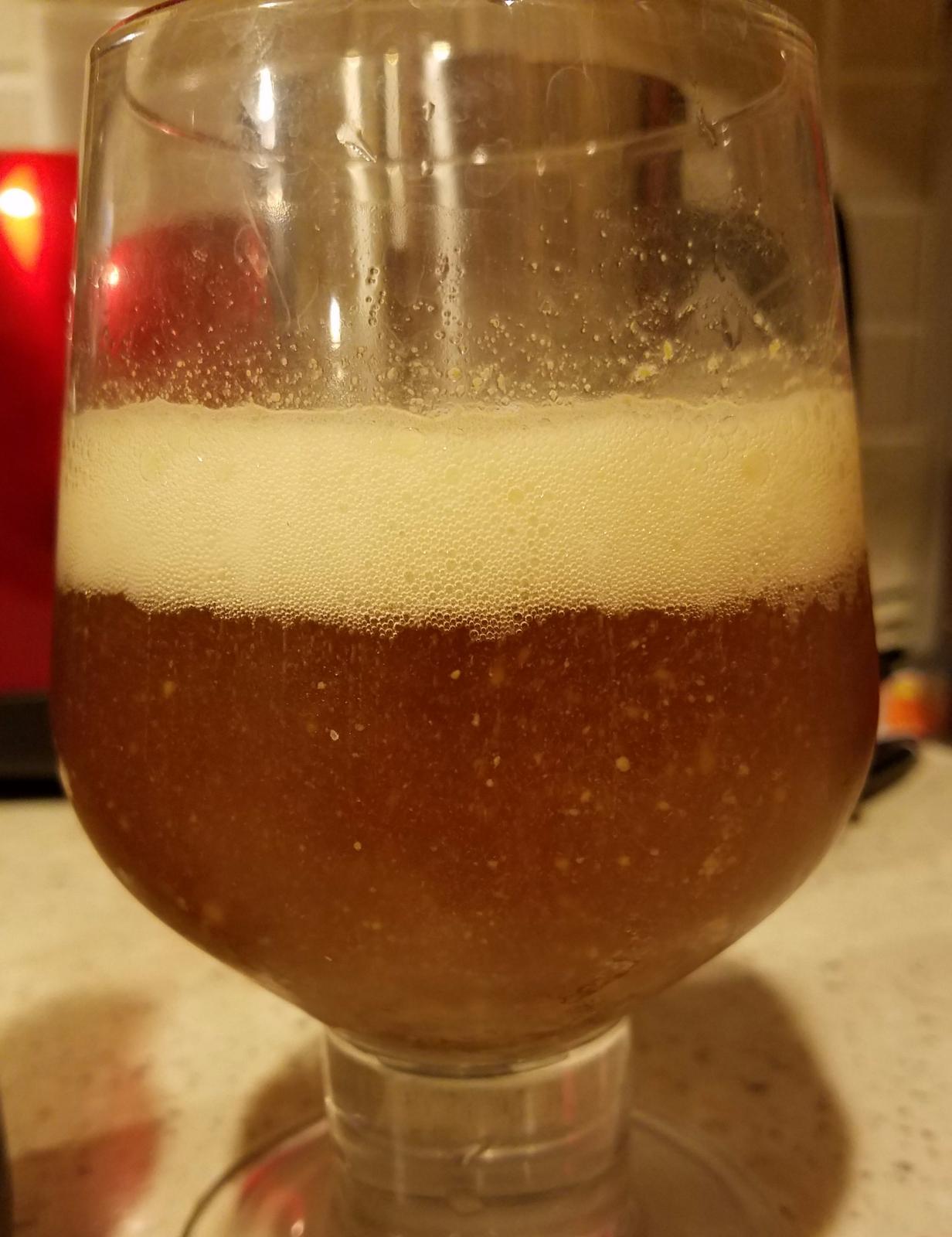jack13
Well-Known Member
Brewed a wee heavy last month, which we bottled a few days ago. I do 5.5+ gallon batches, and usually check a bottle after 4 or 5 days. As you'd expect, at this point they usually show little-to-no carbonation. Well, when I opened this wee heavy--which I actually did a little earlier than usual--I got a much stronger hiss, and then in the glass it appeared to be fermenting! You can see this in the photo attached. I just opened another one warm and it overflowed out of the bottle.
I think the answer to "Why did this happen?" is clear enough: The beer wasn't done fermenting and I should not have bottled. But what isn't clear to me is how I would have known this. I have no choice but to dump now, and I'd like to avoid this in the future!
I brewed this on 8/20. OG was 1.073
The fermentation seemed normal (obvious activity for a few days, which slowed down, then appeared to stop). As I usually do, I let it sit around a while after this point, then a few days before the planned bottling day did a refractometer reading, then another one 2 days later to make sure they were the same. I did this two days before bottling, and got 8.9 brix, then again on bottling day and again got exactly 8.9, so went ahead. Total in primary between pitch and bottlng was 30 days (bottled on 9/19).
I did recognize that 8.9 was a bit high, but a) refractometer is unreliable when alcohol is present, b) I'd had others this high without issue, and c) I always thought the key was that the readings were the same, which they were. The FG with the hydrometer was 1.018.
So, any thoughts as to what I did wrong? BTW in the meantime I've put the bottles outside, and plan to start opening and dumping them shortly, unless by some miracle someone here has a way to save them.
Edit: Forgot to mention the yeast: Wyeast Irish Ale (harvested from previous batch...probably about half of the original yeast cake)

I think the answer to "Why did this happen?" is clear enough: The beer wasn't done fermenting and I should not have bottled. But what isn't clear to me is how I would have known this. I have no choice but to dump now, and I'd like to avoid this in the future!
I brewed this on 8/20. OG was 1.073
The fermentation seemed normal (obvious activity for a few days, which slowed down, then appeared to stop). As I usually do, I let it sit around a while after this point, then a few days before the planned bottling day did a refractometer reading, then another one 2 days later to make sure they were the same. I did this two days before bottling, and got 8.9 brix, then again on bottling day and again got exactly 8.9, so went ahead. Total in primary between pitch and bottlng was 30 days (bottled on 9/19).
I did recognize that 8.9 was a bit high, but a) refractometer is unreliable when alcohol is present, b) I'd had others this high without issue, and c) I always thought the key was that the readings were the same, which they were. The FG with the hydrometer was 1.018.
So, any thoughts as to what I did wrong? BTW in the meantime I've put the bottles outside, and plan to start opening and dumping them shortly, unless by some miracle someone here has a way to save them.
Edit: Forgot to mention the yeast: Wyeast Irish Ale (harvested from previous batch...probably about half of the original yeast cake)


























![Craft A Brew - Safale BE-256 Yeast - Fermentis - Belgian Ale Dry Yeast - For Belgian & Strong Ales - Ingredients for Home Brewing - Beer Making Supplies - [3 Pack]](https://m.media-amazon.com/images/I/51bcKEwQmWL._SL500_.jpg)































